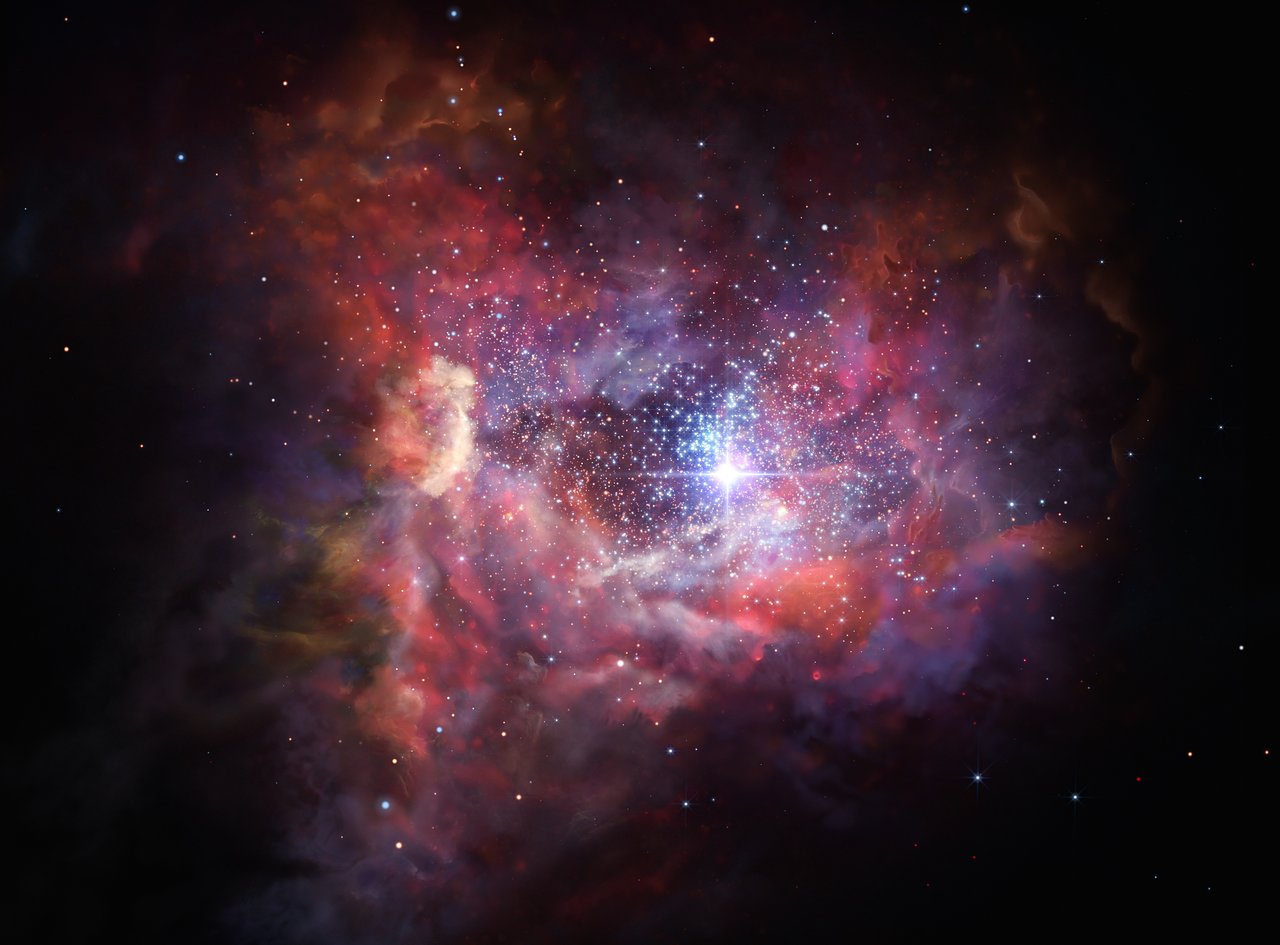Prastarý hvězdný prach odhaluje tajemství prvních hvězd | ESO Česko
http://www.eso.org/public/czechrepublic/news/eso1708/?lang
Nejvzdálenější objekt pozorovaný pomocí radioteleskopu ALMA
ESOcast 99 Light: ALMA Sheds Light on the First Stars (4K UHD)
https://www.youtube.com/watch?v=ip73thabd4w
Astronomové využili radioteleskop ALMA k detekci značného množství prachu ve velmi vzdálené galaxii, kterou pozorujeme tak, jak vypadala krátce po svém vzniku –
v období, kdy byl vesmír starý pouze 4 % současného věku. Jedná se o zatím nejvzdálenější galaxii, ve které byl prach úspěšně detekován. Pozorování rovněž přineslo
objev kyslíku v dosud největší vzdálenosti. Tyto výsledky poskytují zcela nový pohled na zrod a explozivní zánik prvních hvězd ve vesmíru.
Nicolas Laporte (University College London) a mezinárodní tým jeho kolegů využili radioteleskop ALMA (Atacama Large Millimeter/submillimeter Array) ke sledování
objektů s katalogovým označením A2744_YD4, což je nejmladší a nejvzdálenější galaxie, jaká byla dosud pozorována pomocí tohoto zařízení. K jejich překvapení se jim
podařilo odhalit, že tato mladinká galaxie obsahuje značné množství mezihvězdného prachu – částic, které vznikly v závěrečném stádiu vývoje hvězd.
Následná pozorování provedená pomocí přístroje X-shooter, který pracuje ve spojení s dalekohledem ESO/VLT (Very Large Telescope), potvrdila enormní vzdálenost
sledovaného objektu. Galaxii vidíme tak, jak vypadala, když byl vesmír pouze 600 milionů let starý, tedy v období, kdy vznikaly první hvězdy a galaxie.
